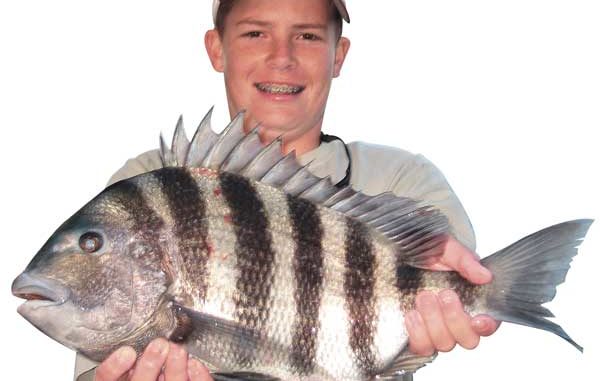
Marine biologists believe speckled trout will carry the day this spring and summer, and other inshore and bluewater species also look promising.
How will fishermen fare along South Carolina’s coastline this year?
To answer that question, all you have to do is forecast the weather.
At least that’s what Charlie Wenner, a marine biologist with the S.C. Department of Natural Resources, has to do when he looks into his crystal ball.
“If we don’t have a bad freeze, it really looks good for this year,” Wenner said in mid-January.
A hard winter freeze is usually bad news for spotted seatrout, a.k.a. speckled trout, and they are such an important fish, targeted by so many fishermen, that a bad trout season can mean an all-around bad year up and down the coast.
Trout and redfish drive the inshore fishery so much that a bad year for either species casts a dark shadow over the entire coast. But it would take something like a huge cold front — and the ensuing trout kill — to darken what looks like one of the brightest outlooks in a while.
Trout numbers look great, redfish numbers appear promising for the next year or two — with a tilt toward the larger members of the species — flounder are around in great numbers (if a little smaller), sheepshead are numerous, small black drum should cover inshore waters and even gray trout (weakfish) are expected to make their decent annual showing.
Off the beach, the major pelagic species — king mackerel, Spanish mackerel, blackfin and yellowfin tuna, dolphin and wahoo — appear to be fairly healthy. The reef fishes — black sea bass, grouper and snapper — are not doing quite as well, owing in part to increase fishing pressure.
Spotted Seatrout
Wenner said that a period of six or seven years since the last killing cold snap has left South Carolina fishermen with plenty of specks — from the Little River area all the way to the Georgia border.
“It looks good for trout,” he said. “There are good numbers of trout everywhere. Everybody did quite well on them last year.”
Wenner said age and size distribution in the fishery has been good. Trout are showing up in good numbers, all the way from small “spike” trout to the 3- and 4-pounders that warm a fisherman’s heart.
“They grow pretty good,” he said. “The females will put on about a pound a year. We should see bigger fish this (fall). All of the 10- to 12-inch fish … should be 14- to 17-inch fish by the fall.”
The key, as it is every year, is winter survival. Specks are the most temperature-sensitive of all inshore species. When the water temperature drops below 45 degrees — as it often does during strong cold fronts — specks become stressed if they can’t find move and find warmer water. If they’re stuck in shallower estuaries, without relief, they don’t make it. An extended period of cold weather can be deadly.
“The last hard freeze we had was 1999-2000 — from just after Christmas for about three weeks into January,” Wenner said. “We had overcast, blowing days, real garbage weather, real cold. Once you start to see some shrimp killed, you start to lose trout. The longer it stays below 45 degrees, the more fish you lose.”
Wenner said the chance of a kill usually passes around mid-February. If they make it to March 1, they’ll be healthy and numerous in the spring, summer and fall.
Being fairly fast-growing fish, trout can recover from a major kill in a couple of years.
Bill Rumillat, like Wenner an inshore specialist for the SCDNR, said that it was about 2003 before the population showed signs of recovery after the last freeze. But with four undisturbed year-classes in a row, there should be more than enough trout to fill coolers everywhere along the coast.
“If we don’t have the freeze, we’ll be able to walk across (Charleston Harbor) without getting our feet wet,” he said. “It should be phenomenal.”
Creel limits remain at 10 fish per day, with a 14-inch size minimum.
Redfish
The long and short of redfish numbers is, well, long and short.
Wenner said that fishermen can expect to see plenty of big redfish — and a lot of the little rascals known as “rat reds” that are much shorter than the 15- to 23-inch slot limit for keepers.
“We’ve got a lot of small fish around, a number of fish that will be coming into the slot, fish 14 to 17 inches long,” he said. “We don’t see a strong year-class in the slot — that’s the 2004-05 class that was low. The 2003 class is pretty good, so we’ll see a lot of fish bigger than the slot.
“The fish just coming into the slot, they’re 18 to 20 months old. Once they reach that size, they start to grow like weeds. They’ll stay in the slot only 13 to 15 months.
“And there are pretty decent numbers of fish larger than 27 inches in the population. It’s the 3- to 5-pound fish that aren’t abundant.”
Redfish numbers are pretty consistent up and down the coast, Wenner said.
“What we see in Charleston Cape Romain and Winyah Bay, we generally see the same things in St. Helena Sound and other places,” he said.
Flounder
Rumillat said that flounder numbers have remained consistent over the past 10 to 15 years. More restrictive creel limits for giggers should help protect the stock.
“We’ve seen consistent numbers year after year,” he said. “We haven’t seen any decline in catch-per-unit effort by fishermen.
“What we did notice was that 10 or 15 years ago, (flounder) 18 inches and over made up about eight to nine percent of the total flounder caught. The last few years, we’ve gotten good numbers of fish, but the percentage of fish longer than 18 inches has dropped to about three percent of the total catch.
“It’s been a consistent decline. We still have legal fish (14 inches) in reasonable numbers, but the big fish aren’t as abundant as they used to be.”
Black Drum/Sheepshead
Black drum are protected this year with a 5-fish daily creel limit and a 14- to 27-inch slot limit.
Wenner said black drum numbers are good in the 15- to 24-inch range.
As far as numbers of sheepshead are concerned, fishermen should have no trouble finding them.
“Not that many people target sheepshead; we don’t have any problem with them,” he said. “We do see a lot of small fish being kept, 6- to 8-inch fish, but that’s mostly because a lot of people don’t know any better.”
Wenner said that sheepshead are fairly slow-growing fish. Their flesh is white and firm, and considered excellent table fare, but they are only seriously targeted during the colder months when other species are absent from inshore or nearshore waters.
“A 2-year-old fish is about a pound-and-a-half,” he said. “They spawn anywhere between three and five years. As they reach sexual maturity, they grow quite slowly, but we have seen fish as old as 21 in our surveys.”
Inshore jetties, reefs, wrecks and livebottom areas have big concentrations of sheepshead at different times of the year, with fish up to 10 pounds being caught regularly.
Weakfish (Gray Trout)
Gray trout are another species that isn’t specifically targeted by many South Carolina fishermen, because they aren’t in coastal waters in good numbers for much of the year, and their numbers are consistently good only along the northern coastline.
“It’s pretty much a winter fishery,” Wenner said. “They’ll be on nearshore areas and livebottoms, especially along the Grand Strand. They’ll show up in the winter on some of the nearshore reefs and wrecks out of Charleston — the Capers Reef and Charleston Nearshore Reef. When they’re here, people put some real hurt on them using soft-plastic baits and bucktails, that sort of thing. They tend to school up.”
One of the best areas for gray trout is a livebottom area about 150 to 200 yards off Sunset Beach, directly out from the Holiday Inn.
“That’s an area of livebottom, a lot of exposed rocks and small ledges,” Wenner said. “From mid-November until it warms up in the spring, we’ll have weakfish in that area.”
Gray trout are much more prevalent along the North Carolina and Virginia coastlines. South Carolina is about the southern end of their range. They’re managed with a 10-fish daily creel limit and 12-inch size minimum.
Mackerel/Bluewater
Biologist Robert Wiggers with the SCDNR said the South Atlantic Fisheries Management Council is getting ready to start a new assessment of the king mackerel stock, but based on the most-recent assessment, fishermen may not have to worry about catching kings.
The populations of both king mackerel and Spanish mackerel appear to be fairly good and fairly stable.
“We haven’t had any major regulation changes since our last assessment, and from that you can feel like the stock is not overfished,” Wiggers said. “In the next king mackerel assessment, the SAFMC is going from an age-based assessment to a length-based assessment, which should give us a better picture of the health of the fishery.
“Spanish mackerel don’t appear to be having any problem. Any species that are as short-lived and fast growing as Spanish or kings tend to recover quickly from any problems they might encounter.”
It’s tougher to get a picture of wahoo, dolphin and tuna fisheries, but Wiggers said there are no indications that any of those species are in trouble. There has been no recent wahoo assessment, tuna appear to be holding their own, and dolphin are a bluewater version of the mackerel — fast-growing, short-lived and able to reproduce and grow so quickly that any temporary bumps in their road are just that: temporary.
Reef Fish
Technology has been great for fishermen, but maybe not so great for offshore fish that live around rocks, reefs and ledges.
More and more effort on the part of fishermen is leading to some worries from biologists that reef fish — grouper, snapper and black sea bass — are becoming, to some extent, overfished.
“As soon as LORAN became popular — and now GPS — and fishermen started getting better fish finders, it became easier for people to find new areas and relocate old ones,” said biologist Pat Harris of the SCDNR. “And as more people have moved to the coast, you’ve got more people feeling comfortable going offshore in a 20-foot boat, and you’ve got more fish being caught.”
The problems are not across the board. Harris said that some species of reef fish have been overfished for many years, some for not as long.
Black sea bass have been showing stress from overfishing for between 10 and 20 years, while gag grouper have only recently been categorized as “overfished” by fisheries managers — who still believe the number of fish in the South Atlantic population is at a good level.
Like their cousins in the Gulf of Mexico, red snapper are starting to show signs of trouble, Harris said.
“I think it’s going to be a surprise to quite a few people,” Harris said of an upcoming report on the species. “The stock assessments for red snapper are not looking good. For vermillion snapper, they are unclear. The amount of fish being caught probably suggests overfishing. There’s just too much fishing (effort) occurring.”
Harris said that scamp grouper numbers look pretty good, and amberjack seem to be holding their own.

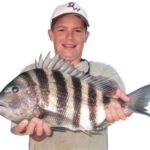
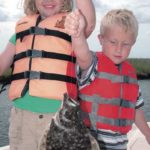
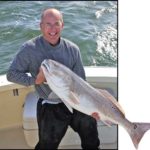
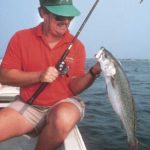
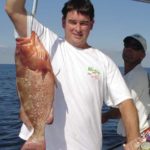



Be the first to comment